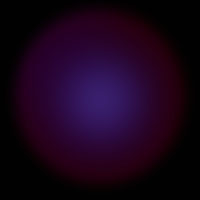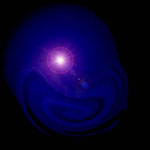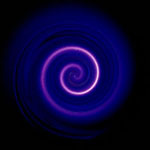 |
The information in this incomplete work about the Mandala some collected, some written by me in the hope that more people will become interested in this ancient and yet so timeless representation of the Universe and everything in it. This is only to give you a taste and get you started on your own Mandala path and know that the path to the Center is you… Anika |
|
Description Tibetan Buddhist Mandalas Sand Mandalas Mandalas in the West Carl Jung and Mandalas Connecting to the Mandala Use of the Mandala Making Mandalas in Aquarel |
 |
|
The word Mandala is Sanskrit for whole world or healing circle. The Mandala is a representation of the universe and everything in it; it is the most basic form in nature. Khyil-khor is the Tibetan word for Mandala and means "Center of the Universe in which a fully awakened being abides." Circles suggest wholeness, unity, the womb, completion and eternity. They are used as tools for reconsecrating the earth and its inhabitants, and are formed of a traditional prescribed iconography that includes geometric shapes and a multitude of ancient spiritual symbols. In general, all Mandalas have outer, inner and secret meanings. On the outer level they represent the world in its divine form; on the inner level they represent a map by which the ordinary human mind is transformed into enlightened mind; and on the secret level they depict the perfect balance of the subtle energies of the body and the clear light dimension of the mind.   The Traditional Mandala is a complex design that is used in religious practice for meditation or contemplation. The images are prescribed by tradition and are drawn, painted, modeled as in sand sculpture, or danced. Plastic structures of this kind are to be found, for instance in Tibetan Buddhism, and as dance figures these circular patterns occur also in Dervish monasteries. In Tibet, the process of creating a Mandala is as important as the finished product. It takes years of preparation and training to gain the skill and knowledge required painting. Even when one is able to begin, meditation for three days must occur before a brush can be put to canvas. According to the legend, the founder of Tibetan Buddism, Padmasambhava was born in a lake in a lotus blossom. The Padmasambhava Lake is considered to have the clearest blue color of all the lakes in the world and to hold strong healing power. One of the means of the Tibetan Buddhists to gain freedom is meditation on sublime thoughts and pictures. Such a picture is the Mandala. There are many types of Mandalas in Tibet. In Tibetan Buddhism the figure has the significance of a ritual instrument (yantra), whose purpose is to assist meditation and concentration. The first type is recognized by its sinister images of fire, dragons and warriors. The overall impression is one of dynamic energy. In contrast, the "cosmic fortress" creates a visual safe place, filled with gods, goddesses, lotus and angelic beings. They are there to protect and bless us as we tune into that center within ourselves. The Mandala is often illustrated as a palace with four gates, facing the Four Corners of the Earth. Of all the artistic traditions of Tantric or Tibetan Buddhism, painting with coloured sand ranks as one of the most unique and exquisite. In Tibetan, the art is called dul-tson-kyil-khor, which means "mandala from coloured powders". To construct the mandala, millions of grains of sand will be painstakingly laid into place on a flat platform. The mandala is a formal geometric pattern representing the floor plan of a sacred mansion. The actual construction begins with the drawing of the design on the base. The artists measure out and draw the architectural lines using a straight-edge ruler, compass and white ink pen. Once the diagram is laid out, coloured sand is applied to the mandala through the end of a metal funnel, known as a chang-bu. The most common substance used in the creation of a dul-tson-kyil-khor is white marble that has been ground and then dyed. Other popular substances are powdered flowers, herbs or grains, as well as powdered and coloured stones. Intricate patterns reflect many levels of understanding. The design is ritually prepared over a period of days, then blown away to represent the impermanence of life. The sand, which has been blessed throughout the process, is seen to benefit the land and rivers it comes in contact with. Tibetans believe that a sand Mandala contains the knowledge to achieve enlightenment in this lifetime. The creation of a sand painting is said to effect a purification and healing. In his commentary on the empowerment ceremony of the Guhyasamaja Tantra, the Seventh Dalai Lama (1708-1757) wrote: "Empowerment can be accomplished on the basis of a drawn or painted mandala, a mandala made of coloured powders or sands, or a mandala created through meditation." The artists begin from the inside of the design and work outward, to symbolize how at birth a child is just a drop of sperm and ovum, and then steadily grows, until eventually the entire universe becomes experienced through the senses. When eventually the Mandala has been completed and its purpose served, the time for dismantling it has arrived. The sands are swept up from the outside toward the center, thus symbolizing how in old age and at the time of death everything once more returns to the primordial source at the center of the heart. Prior to dismantling the mandala, another ceremony is performed, giving thanks to the local spirits for their cooperation, and dedicating any meritorious energy that has been generated to the fulfillment of universal benefit, healing and peace. The sands are swept up and carried in a vase to a nearby body of water, where they are deposited. Placing the sands in water, which by nature is connected to all the waters of the world, symbolizes the dedication of the positive energies of the mandala process to universal goodness. In addition to symbolizing the impermanence of things, the dismantling of the mandala symbolizes the ultimate voidness nature of phenomena: how all things come out of nothingness and eventually return to it. There is also a tradition of healing circles in the west. Powerful symbolism is seen in Native American sand paintings, medicine wheels and shields. Medicine wheels represent the universe, change, life, death, birth and learning.The great circle is the lodge of our bodies, our minds and our hearts. Although there are many parallels to the Tibetan Mandala, Native Americans never used the word Mandala to describe their sacred circles. In Europe, Hermetic Mandalas, though usually linear, may also be circular. Alchemy, the Kabbalah, geometry and numerology play an important part of their design and creation. In his book "The Western Mandala", Adam Mc Clean writes: "Mandalas can be seen as keys that unlock the mysteries of our soul's architecture. If we choose to use them in this way, they can lead us deep into the mysteries of our inner world." The architecture of Gothic cathedrals shows another way towards illumination.  The Western culture is familiar with Mandalas primarily because of the work of Carl Jung who became interested in them while studying Eastern Religion. In Jungian Psychology, the Mandala or magic circle is visualized in dreams symbolizing the dreamer's striving for unity of self and completeness. Very frequently they contain a quaternary or a multiple of four, in the form of a cross, a star, a square, an octagon. Jung saw the circular images his clients experienced as "movement towards psychological growth, expressing the idea of a safe refuge, inner reconciliation and wholeness." For Jung, Mandalas are "vessels" in which we project our psyche. The projection is then returned to us as a way of restoration. He recognized that archetypes from many cultures were seen in this spontaneous expression of the unconscious. Circles are universally associated with meditation, healing and prayer. There are many ways to connect with Mandalas. Numerous cultures have developed specific methods and added meaning to the process. Depending on whom you ask for a definition of Mandalas, you get different answers. Some definitions are wide, others broad, and sometimes the intersection between them is empty. For some people Mandalas, and the making of them, is a highly formalized art, for others they are a means of self-expression. There is no absolute correct way. We must each find our own path to the center. Meditating with and creating Mandalas is a wonderful way to enhance the journey. As the Tibetan monk Lobsang Samtem states: "Each individual person who sees and meets the Mandala has a different experience. May your encounters with Mandalas be filled with deep understanding and peace."  In Eastern traditions Mandalas are round or sometimes square and two-dimensional. Jungians usually see Mandalas as round and two-dimensional. There are two basic uses for Mandalas: They can be used as a focus for meditation or they can be used as a way of getting to know your self better. In the first case the stress is on the use of the finished Mandala, in the second the making of the Mandala is the most important. Of course you can use a Mandala made for self-exploration as an object for meditation, and vice versa, A Mandala meditation can be a kind of self-exploration.In general, the art, symbols, and color of a Mandala will guide an individual from the distractions of the mind, the outer rim of the Mandala to a still center, the center of the Mandala. The Mandala you use usually has a special significance for you. This makes it a potent tool. In times of stress, you can use your Mandala as a reality anchor. Whenever you feel that you are loosing grip, you simply visualize your Mandala and concentrate on it. Choose a soothing but well-defined Mandala for this purpose. Whichever definition of Mandalas you subscribe to, they're supposed to be good for you. Many people say that they feel better whether they use it for self-exploration or as an object for meditation. A circular design seems to be particularly beneficial. There is great variety of patterns to explore. For someone new to Mandalas, it is probably best to choose something simple, and increase the complexity later on. Start out with a pattern that appeals to you.  The colors you use in your Mandala will affect you in different ways. The only way to find out exactly how is to experiment. If you follow a specific tradition, there is often a color system within it that you can experiment with. In watercolor use Aquarel paper of a good quality with a not to heavy structure. Since the watercolor is a transparent medium we can paint layer over layer and create an etheric effect in the Mandala. The first layer is applied on wet paper on which we spread the seven colors of the spectrum randomly. The first layer paints itself with the paint flowing on the wet surface. When dry we are able to make the outline of the Mandala. I like to use rulers with different shapes as help for the main structure and from there the Mandala takes shape. The outline I trace with a gold marker or with gold ecoline. Then the Mandala is filled in with the watercolor layer over layer. The result is a Mandala that stands out from its background, but also takes shape out of the background. A visual representation of creation and Life; shape comes forth out of Void.Over the years I have been making Mandalas in Aquarel. I experiment with different kind of paper for example handmade paper from Nepal. With children in my art classes I use the Mandala and make them as part of a project. The children fill in the colors on a Mandala design and we are always amazed that no Mandala comes out the same. Often when designing something I find that I will choose a Mandala. I can say they became a part of my daily life. I like to look at a Mandala and notice that I will look for the Mandala in every centric form I meet . |
|